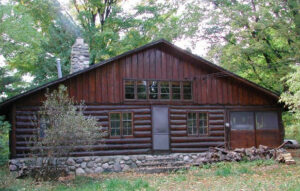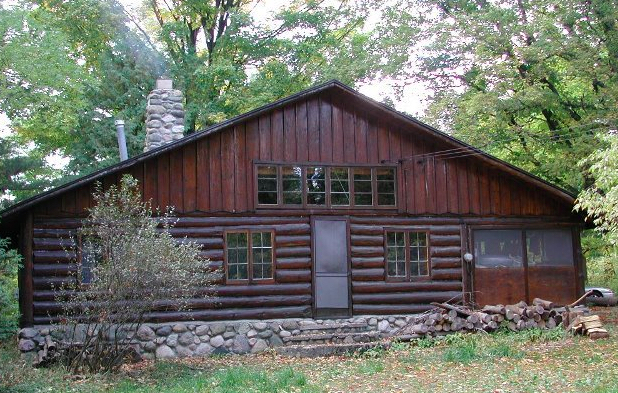Oftentimes, during log home inspections, we find items that will require immediate attention or may be a red flag for future problems. For example, if decks, woodpiles, or propane tanks are placed too close to the walls they can be a source of moisture and rot. Look for settling space above doors and windows. This is important since log homes tend to settle over time. Check out Richardson Log Homes LLC for more helpful details about log homes.
Insects
 The wood that log homes are made of can be infested with wood-destroying insects. In some cases the logs become infested while they are still in the forest, or after they are debarked and used in construction. In either case, extensive cosmetic and structural damage can occur. The most common pests of log homes are long-horned beetles, flat-headed wood borers, and powderpost beetles.
The wood that log homes are made of can be infested with wood-destroying insects. In some cases the logs become infested while they are still in the forest, or after they are debarked and used in construction. In either case, extensive cosmetic and structural damage can occur. The most common pests of log homes are long-horned beetles, flat-headed wood borers, and powderpost beetles.
Infestations of these insects are more likely to affect logs that are closer to the ground or if they have been exposed to a lot of sunlight. This is because sunlight can cause UV degradation of the wood cells. When this happens the wood loses its moisture barrier and becomes more susceptible to infestation by fungi and rot.
A good inspector will look for evidence of insect infestations. The shape and size of entry holes will give clues as to the species of insect that is present. For example, termites and carpenter ants have wings that they shed as they burrow into the wood. If the inspector finds a pile of wing debris near an entrance hole it is probably a good idea to check to see if the insect is active and then seal the entry hole.
It is also a good idea to inspect the condition of the caulking or chinking between the logs. If there are chunks missing, gaps or tears the chinking needs to be repaired or replaced. The same is true of the sealant around windows, dormers and other protrusions into the log wall.
Another area that is important to inspect for insect infestations is the corners of the home. The corners are particularly vulnerable because they are exposed to rain and run off water. If the corner posts are rotting or there is excessive sagging it may be due to insect infestation and a lack of proper maintenance.
Water Damage
Log homes are very different from conventional stick-built houses, but that doesn’t mean home inspectors should turn their nose up at them. A thorough inspection of a log home can uncover issues that, left unchecked, could lead to serious problems such as mold and mildew, wood rot and even structural failure.
Because logs actively seek out water to help them retain moisture, these homes require a different maintenance program than do traditional homes. Moisture control includes proper chinking, caulking and staining. It also includes ensuring the roof and gutters are properly installed, clogged gutters are removed and checked regularly for leaks. In addition, exterior spigots should be kept closed when not in use and any leaking spigots should be repaired promptly.
The exterior of the log walls should be inspected for signs of rot or decay, damage from insects and other animals, and for fungus. It’s important to inspect the entire wall from top to bottom. Look for rot or damage at the base of the logs, where mud and debris build up, as well as at the tops of the logs where they are exposed to rain, snow and ice.
A good quality log home stain will protect the logs from rot, but it can wear off over time and should be reapplied when needed. To check the stain, spray a few areas of the wall with water to see if it beads or soaks into the wood. Also look for long crevasses in the logs that indicate chinking is deteriorating and should be replaced.
The windows and doors should be inspected for proper operation and seals, as well as the condition of the wood around them. Look for signs of wood-boring insect activity such as piles of sawdust beneath a hole in the log or a pencil-sized tunnel running up through the log. Also look for caulking that needs to be replaced or re-caulked.
Finally, don’t forget to examine the dormers if they are present. These are often overlooked and can be a source of moisture penetration that can lead to rot and insect infestation.
Staining
Staining is one of the most important aspects of a log home inspection. It protects the logs from moisture which can lead to rot and mold. It also helps to keep bugs out of the logs. Stains usually last 2 to 3 years before they need re-staining. It is important to look at the color of the stain and how even it is. It should also be able to hold water if splashed on the logs. If the stain is splotchy, it probably needs to be re-stained.
It is a good idea to walk around the whole exterior of the home. This will give the inspector a chance to look for things that might be missed when looking at the home from inside. It is a good idea to bring a camera and take pictures of the home and its surroundings.
This can be especially useful in determining when the home was built and how well it has been maintained since then. If the home has had many owners, it may be an indicator of problems that are a result of past neglect. It is also a good idea to check how many of the logs are cracked or split, as this indicates that they need to be caulked or chinked.
If the chinking has been done correctly, it should be clear of any gaps or cracks. It is also important to check for a proper seal on the dormers and upper story windows. Checks and gaps in these areas are a source of air, moisture and insect intrusion.
Another area to examine is the lower courses of the logs. These are often dripped on by the roof and can be subject to rot. It is also a good idea to inspect for signs of rot in the corners of the log walls. If the corners of a log wall are discolored or have holes that you can poke with a screwdriver, this is a sign of rot and should be repaired.
In addition to examining the logs, it is important to check for proper drainage and that all downspouts are unobstructed. Checking for mud tunnels around the foundation will indicate whether termites or carpenter ants have been infesting the home.
Foundation
A log home inspection is much different from a traditional home inspection. It’s essential to hire a professional who is familiar with the unique characteristics of log homes and has experience with both new construction and the restoration of older structures.
Inspecting a log cabin is about more than just looking for dents and stains; it’s also about examining the structure’s foundation. This is because the ground under a log home can affect its overall condition. Logs that are near the ground can become rotten and damaged, causing moisture problems throughout the structure. If this is left unchecked it can lead to expensive repairs and replacements in the future.
Another important thing to look for during a log home inspection is the amount of settling that has occurred. All log homes experience some settling due to the drying and shrinking of the logs. However, if the settling is extreme it can cause cracks and crevases in the walls that may lead to water infiltration. The chinking can also pull away from the logs and need to be caulked or replaced.
The settling process can also create stress on windows and doors. This can lead to warping and sagging of window and door frames as well as damage to the interior of the wall. The inspector should examine all the joints and areas around the doors and windows to ensure they are secure.
Lastly, the inspector should also check to make sure there is proper drainage around the foundation and that the first course of logs is not touching the ground. If the logs are touching the ground they will rot faster and attract termites and other pests that love to live in rotting wood. The inspector should also look for pencil sized mud tunnels that indicate termites.
While some lengthwise cracks are normal in a log home, any larger ones should be noted by the inspector. The cracks can be filled with caulking and repaired, but if left unchecked they could lead to significant problems. The inspector should also check for chinking that is pulling away from the logs as this can allow water to seep into the gaps and damage the logs.
